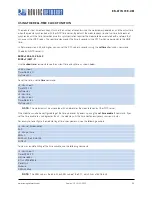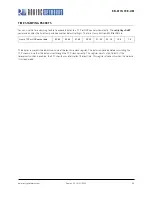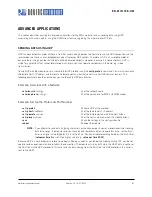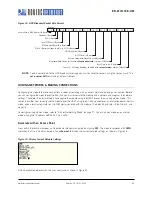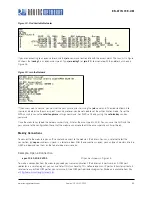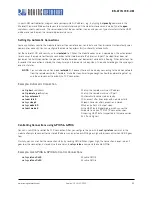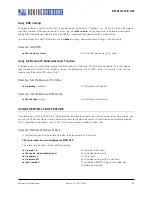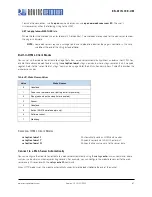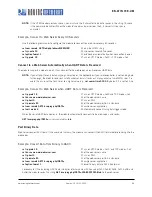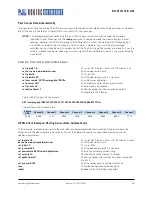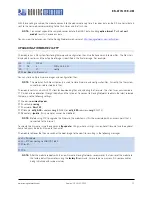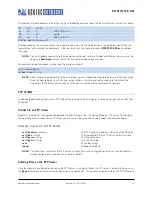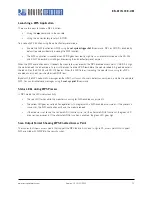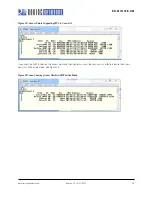
www.rovingnetworks.com
Version 1.0r 9/21/2012
73
RN -W IFLYCR -U M
the name <
filename
> and prints the open string on the UART. By default, the open string is
*OPEN*
. After you see
*OPEN*
on the UART, you can begin writing data in to the file.
There are two options to close the file:
•
Send the close string, which is
*CLOS*
by default.
•
Use the FTP close timer with the command
set ftp timer
<
value
>. Once you finish writing to the file, this timer
begins counting down and closes the file when the timer gets to zero. The timer is one eighth of <
value
>. For
example, to set a 5-second timer, the command is
set ftp timer 40
.
The open and close stings are configurable using the following commands:
set comm open
<
string
>
// Set the open string
set comm close
<
string
>
// Set the close string
Example: Put File on FTP Server
ftp put demo.txt
// Upload the file demo.txt
set ftp timer 40
// Close the connection 5 seconds after file uploads
Retrieving Files from the FTP Server
The module can retrieve files from the FTP server. The retrieved file is not stored in module’s flash memory; the module
acts as a transporter and passes the file over the UART interface as the file is being transferred.
To retrieve a file from the FTP server issue the
ftp get
<
filename
> command. The module prints the open string on the
UART and the file begins transferring from the FTP serer to the module. When the file transfer complete, the module prints
the close string indicating the file is transferred and the FTP connection is closed.
Example: Retrieve File from FTP Server
ftp get demo.txt
// Download the file demo.txt from the FTP server
WI-FI PROTECTED SETUP (WPS)
Wi-Fi Protected Setup (WPS) is a standard for easy and secure establishment of a wireless home network. This standard
was created by the Wi-Fi Alliance and officially launched on January 8, 2007.
The goal of the WPS protocol is to simplify the process of configuring security on wireless networks. The protocol is meant
to allow home users who know little of wireless security and may be intimidated by the available security options to
configure Wi-Fi Protected Access, which is supported by all newer Wi-Fi certified devices (but not older Wi-Fi devices).
The most common mode of WPS is the Push Button Mode (PBC) in which the user simply pushes a button on both the
access point and the wireless client (e.g., the Roving Networks’ WiFly module). See Figure 17.

